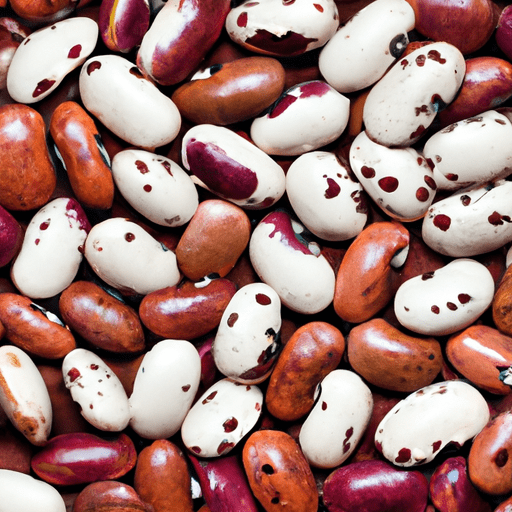The Wonderful World of Dried Beans: Cooking with Flavor and Nutrition
Beans, in all their shapes, sizes, and colors, have been a staple food in many cultures for centuries. One of the most versatile types of beans is the humble dried bean. These treasures can add a delightful twist to your dishes, whether it’s a comforting stew, a zesty salad, or a filling side dish. Not only do dried beans bring a burst of flavor to your cooking, but they also offer a treasure trove of nutritional benefits. Let’s dive into the delightful world of dried beans and discover why they should have a special place in your pantry.
Taste and Texture
The taste of dried beans can vary depending on the variety, but they generally have a hearty, earthy flavor that pairs well with a wide range of ingredients. From buttery lima beans to creamy cannellini beans, each type holds a unique gustatory experience. The texture of cooked dried beans ranges from tender and creamy to slightly firm, making them a great addition to numerous dishes.
Common Uses in Cooking
Dried beans have earned their spot in countless recipes around the world. They can seamlessly adapt to various culinary traditions, elevating both simple and elaborate dishes. Here are some common uses for dried beans:
Soups and Stews
There’s nothing quite as comforting as a steaming bowl of bean soup or stew. Whether it’s a traditional minestrone, a smoky black bean soup, or a spicy chili con carne, dried beans bring heartiness and depth to these soul-warming dishes. Their ability to absorb flavors from spices and herbs makes them a beloved ingredient in many soup recipes.
Salads and Sides
Dried beans shine in salads, adding substance and texture. A colorful Mediterranean salad featuring chickpeas, cucumbers, tomatoes, and feta cheese is a perfect example. Additionally, beans can be transformed into satisfying side dishes such as refried beans, baked beans, or a fragrant rice and beans combination.
Vegetarian and Vegan Dishes
For those following a vegetarian or vegan lifestyle, dried beans are an essential source of protein. They can serve as the star ingredient in plant-based burgers, meatless meatballs, or even vegetarian chili. Their versatility and nutritional value make them a go-to option for those seeking creative and wholesome meat alternatives.
Nutritional Value
Dried beans are not only delicious but also packed with vital nutrients. They are an excellent source of plant-based protein, dietary fiber, and complex carbohydrates. Additionally, they boast an array of important vitamins and minerals, such as iron, magnesium, potassium, and folate. Including dried beans in your diet can contribute to better heart health, improved digestion, and increased energy levels. They are truly a nutritional powerhouse that your body will thank you for.
History and Fun Facts
Dried beans have played a prominent role in culinary history for thousands of years. They were among the first crops cultivated by humans as an essential source of sustenance. In ancient civilizations such as the Aztecs, Mayans, and Incas, beans held great cultural significance and were often used in religious ceremonies.
Did you know that dried beans were commonly referred to as “the meat of the poor” during the Great Depression? They were a cost-effective and nourishing food option during difficult times. Today, they continue to be a budget-friendly choice that doesn’t compromise on flavor or nutrition.
Dried beans bring a world of flavors, versatility, and nutrition to your kitchen. Their ability to transform simple ingredients into extraordinary meals is nothing short of remarkable. Whether you’re looking to explore global cuisines, add more plant-based protein to your diet, or simply savor the comforts of home-cooked goodness, dried beans are a culinary treasure worth discovering. So, head to your local grocery store, grab a bag of dried beans, and let your culinary creativity blossom!
Sure! Here are some interesting facts about dried beans:
Origin: Dried beans have been a staple food for thousands of years and have been cultivated in various parts of the world. They are believed to have originated in the Americas and were one of the first crops domesticated by ancient civilizations.
Common Uses: Dried beans are used in a wide variety of dishes, including soups, stews, salads, and side dishes. Some popular bean recipes include chili con carne, refried beans, hummus, and bean salads. They can also be ground into flour to make bean-based pastas and baked goods.
Nutritional Benefits: Dried beans are highly nutritious. They are an excellent source of plant-based protein, dietary fiber, complex carbohydrates, vitamins (such as folate and thiamine), and minerals (such as iron, magnesium, and potassium). They are also low in fat and cholesterol-free.
Unique Properties: One unique property of dried beans is their ability to absorb flavors from the ingredients they are cooked with, making them versatile for various seasoning combinations. Additionally, dried beans have a long shelf life and can be stored for an extended period. They are also available in a wide variety of types and colors, such as kidney beans, black beans, chickpeas, and lentils.
Historical Significance: Beans played a crucial role in ancient civilizations due to their nutritional value and long shelf life. They were highly valued as a sustainable food source, especially during long journeys or war times. Beans were even mentioned in historical texts, such as the Bible and ancient Egyptian hieroglyphics.
Remember to always soak and cook dried beans properly to ensure they are safe to consume. While they provide significant health benefits, they can also be toxic if not prepared correctly.




Use the share button below if you liked it.
It makes me smile, when I see it.